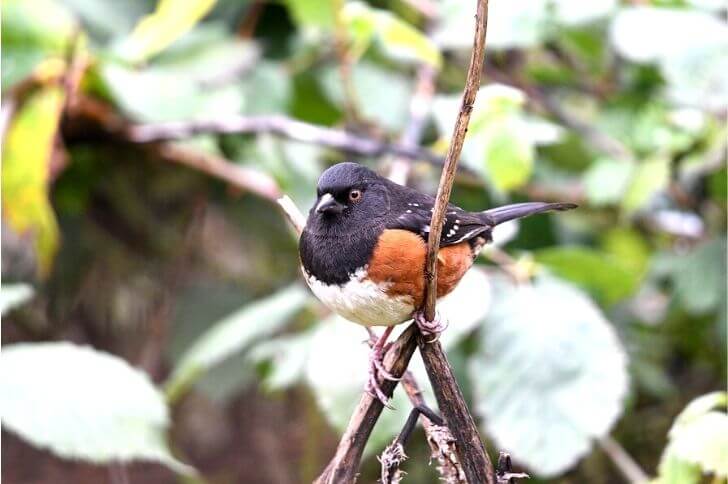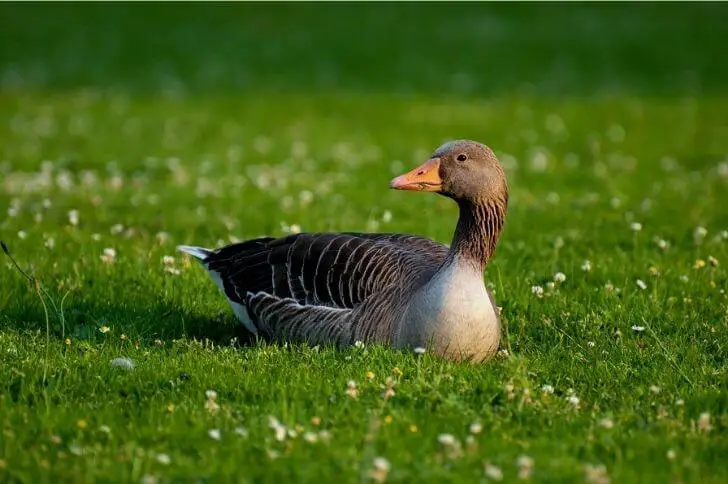The Midwest is home to many different species of birds. Some of these birds are year-round residents, while others only visit the Midwest during certain times of the year. Some of the more common species of birds that can be found in the Midwest include: American goldfinches, downy woodpeckers, eastern bluebirds, and northern cardinals.
Birds that migrate through this area include sandhill cranes, black-crowned night-herons, redheads, and warblers. Places you can visit to experience birds migration include Horicon National Wildlife Refuge and Loess Hills National Wildlife Refuge.
The list below covered different birds of the Midwest. From North Dakota to Ohio, these are common birds you can watch in this region.
List of Birds of the Midwest
1. Red-winged Blackbird
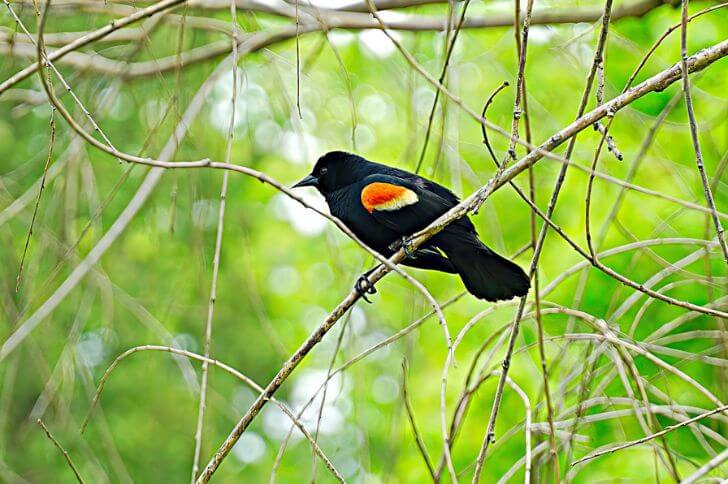
Identification:
Red-winged blackbirds are one of the most common true blackbirds in North America and in the family Icteridae. Like other blackbirds, its male is overall black with red and yellow patches on their wings. Female red-winged also have a faint red patch on their wings and are a heavily streaked brown. This species is about 6.7-9 inches in length.
Habitat:
They are short migrants, moving up north to breed. During their nonbreeding season, red-winged blackbirds prefer wet ditches, marshes, borrow pits and moist grasslands.
During summer, they’ll feed on insects which are plentiful. In other seasons, these Midwest birds eat corn and waste grain.
Nesting:
When summer arrives, these birds are ready for mating season. Females will build a nest near water with an abundance of vegetation such as cattails or marsh grasses to provide food and shelter from predators. Both parents take part in caring for eggs and chicks which hatch after two weeks of incubation by the female alone. The male guards both his mate and young while they grow strong enough to fly on their own within one month after hatching.
It is a very abundant breeder in North America, with a population of 140 million birds.
2. Snow Bunting
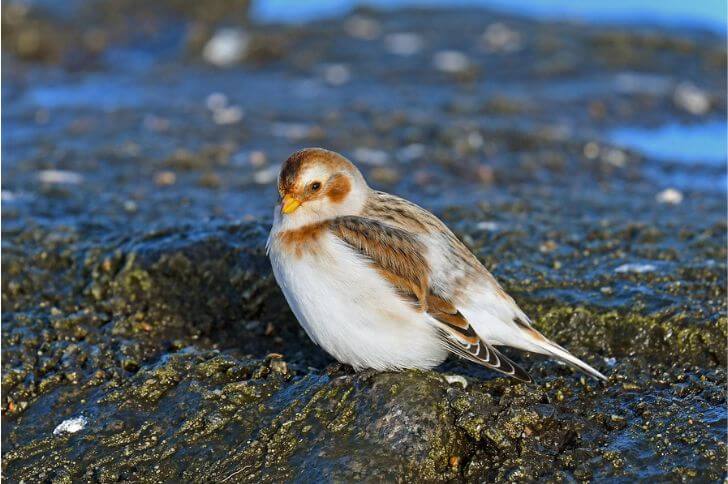
Identification:
Found in the Midwest during its non-breeding months, the snow bunting is a gorgeous black and white bird that prefers the ground.
Both sexes have a round body and are about 5.9 inches in length. Breeding males have beautiful pure white underparts and black wings while females have a streaked back, whitish underside and short canonical bills.
Habitat:
Where can you spot snow buntings? During non-breeding months, you can find them in fields and lake shores. They are gregarious, preferring to stay in flocks of hundreds.
During the breeding season, these birds migrate to the Arctic tundra, where they nest on rocky beaches and cliffs. The snow bunting is an important food source for many animals, including the Arctic fox, Gyrfalcon, and Snowy Owl.
Its worth noting its thick coat of feathers insulates it from the cold.
Breeding:
From late March, you’ll notice the males leaving the Midwest. They arrive in their breeding range a few weeks before females to scout possible nesting sites. When females arrive, they take up the task of building nests. These white birds raise one brood of up to 7 chicks.
3. Ovenbird

Identification:
Ovenbirds are seasonal visitors in the Midwest. They are found in some areas during their breeding season; spring.
How did it get its name? The ovenbird gets its weird name from its nest that resembles an oven. The adult is typically 4.3-5.5 inches in length and has a white spotted underside and olive-green upperparts. Note the orangish crest.
Habitat:
These birds normally share forests with other warblers in mature deciduous forests. They prefer building their nest in moderately sloped areas.
Nesting:
A dome-shaped nest is woven by the female and she leaves a large-enough side entrance. A pair can raise two broods depending on food availability. This bird is known for its loud, clear whistle, which sounds like “teacher-teacher-teacher”. The bird also has a call that sounds like “ple-bleep”.
4. Bald Eagle

Identification:
With a lifespan of up to 38 years, the bald eagle is a majestic bird species that is well known in North America. It has complex mannerisms. Adults have spectacular white heads with yellow bills and the rest of the body is dark brown. Note the broad white tail and yellow feet. Up close you’ll notice its sharp talons.
Habitat:
Their preferred habitat is near large bodies of open water that’s rich with fish populations. Bald eagles often prefer mature forests near these bodies of water as well, which provides them with a safe place to nest and find shelter from harsh weather conditions or predators.
The tree canopy also provides valuable cover for spotting prey from above as well as thermal air currents for soaring without having to flap their wings too much.
Nesting:
These majestic raptors are monogamous in nature and typically mate for life. During mating season, which runs from January to August, these eagles develop a bond as they establish their dominance over a shared territory. They will build nests together that can range anywhere from 1-5 feet deep and 5-8 feet wide on average.
Bald Eagles typically lay two eggs at a time during this period of courtship though only one chick usually survives due to the aggressiveness of the older sibling. The female eagle will remain in the nest while her partner hunts for food until the chicks have developed enough feathers to fly away with ease.
5. Tufted Titmouse
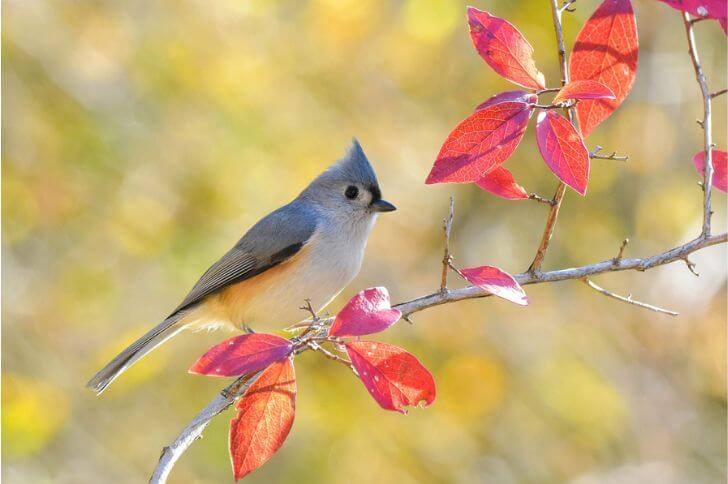
Identification:
Tufted titmice are common in the Midwest, mostly Ohio. They occur all year round and are a common sight in many backyards.
These birds are easily recognizable by their small size, about 5.5-6.3 inches, and their distinctive tuft of feathers on their head. Although they are not the most colorful of birds, they are very active and vocal, which makes them a favorite among birdwatchers.
Habitat:
These birds are social creatures, and they will often be seen in pairs or small groups. They inhabit deciduous forests, woodlands, parks and suburban gardens along the eastern half of the United States.
These birds prefer open woodlands with tall trees and plenty of undergrowth which provides them with an ideal habitat for nesting and foraging in search of their food source – largely insects as well as some fruits and seeds. During the winter months they may move closer to residential areas in search of food sources such as suet from backyard feeders or from other sources such as nuts or berries.
Nesting:
The breeding season for the tufted titmouse usually occurs between March and May each year. During this time, they build nests in trees or nest boxes located near gardens and fields. The female lays five to eight eggs which are incubated for about 13-14 days before hatching.
As with other members of the tit family, both male and female Tufted Titmice take turns feeding their young during their first few weeks after they hatch. After two to three weeks, once they have fledged from the nest, they become independent birds capable of flying and feeding themselves.
6. Baltimore Oriole
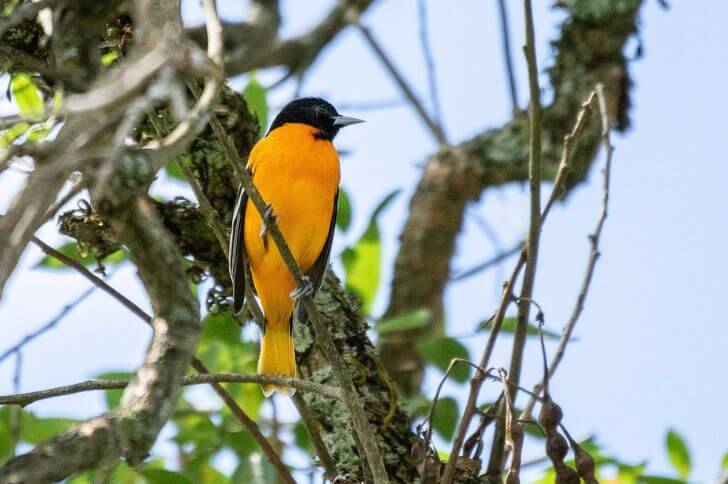
Identification:
The Baltimore oriole is a small icterid blackbird common breeder in parts of the Midwest. They winter in the Southern Coast and Mexico.The male has a bright orange breast, belly and head, with black wings and tail. Note, female orioles are duller with brownish wings. Both have pointed bills and long legs.
Habitat:
Baltimore Orioles nest in deciduous trees near water, such as streams or rivers, making them easy to spot in parks or backyards with creeks running through them. You can also find them in open woodlands.
They prefer areas with dense foliage so they can weave their nests amongst branches and have enough cover to protect their young from predators. These birds are also attracted to fruit-bearing trees like apple and cherry, making them an enjoyable addition to any garden that provides both beauty and sustenance.
Breeding:
During the breeding season, which typically spans from mid-April to July, these orioles form pairs to mate. The male orioles perform courtship displays for their female counterparts by hopping and fluttering about in an attempt to attract them to a nesting site. Once a female has accepted his invitation, she will help build a cup-shaped nest high up in the trees out of grasses, plant fibers and strips of bark.
After the nest is built and the eggs have been laid (typically four to seven). Note, Baltimore orioles are mostly monogamous and come together during the breeding season. During non-breeding months, the birds remain solitary.
7. Western Kingbird

Identification:
Western kingbirds can be found in Illinois from March to July when they gather, pick their mates, and bring forth the next generation. Adults are a unique combo of yellow and gray, with a whitish chest. The adult western kingbird is typically 7.9-9.3 inches long and spans 15.5 inches.
Habitat:
A member of the flycatcher family, these birds inhabit open country such as grasslands and savannas with plenty of perches for hunting insects. In addition to ample trees and shrubs to provide nesting material and food sources, they also need water sources nearby for drinking or bathing. Western kingbirds are highly social birds.
Nesting:
During nesting season, these Midwest visitors construct cup-shaped nests with a variety of materials including grasses, twigs, bark strips, mosses and plant fibers. The female incubates the eggs while the male defends the nest territory from intruders such as hawks or other birds by aerial chases and sharp vocalizations.
8. Indigo Bunting
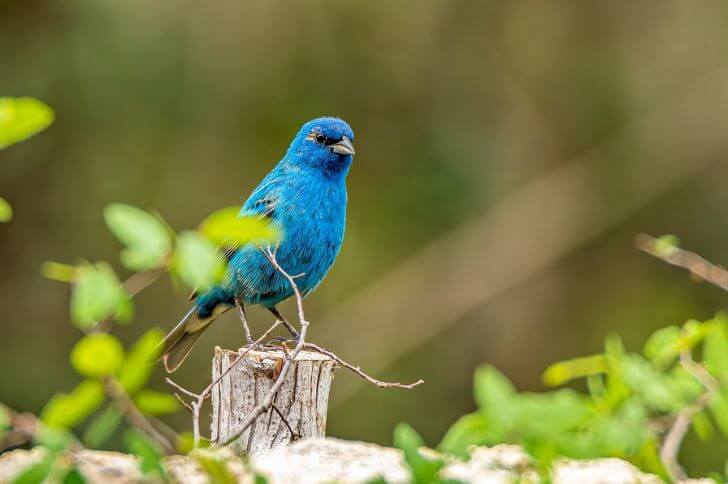
Identification:
Indigo buntings visit the Midwest in summer. They also take this time to breed. These birds display sexual dimorphism. The adult male bunting has blue feathers and a pale bill. The female has brownish feathers and a dull bill. Adults are about 5.1 inches in size; an inch smaller than a house sparrow.
Habitat:
Can you attract indigo buntings? Yes, during summer, you can place two or three bird feeders in your yard. They prefer thistle and mealworms. In the wild, indigo buntings favor power line cuts, abandoned fields, and along streams.
Nesting:
Once the nest has been built, the female will lay two-six eggs in a clutch, which she will incubate for 12-14 days until the chicks hatch. Babies are born helpless and within two weeks, their are strong enough to leave the nest.
If you’re lucky enough to see an indigo bunting, take a moment to appreciate these lovely creatures!
9. Cedar Waxwing

Identification:
Are there brown and yellow birds in the Midwest? Cedar waxwings fit this category perfectly. There are no lookalikes, making identification easy. Cedar waxwings have a brown head and black mask, gray back, and yellow belly. Note the red tips on the wings and yellow tips on wings. These are unique to these passerine birds.
Habitat:
Cedar waxwings are all-year residents in this region but go to breed in the south. In the midwest they tend to prefer wooded areas with abundant food sources such as berries, insects and fruit trees. During summer months they can also be found taking advantage of park lawns or gardens filled with flowering shrubs.
Nesting:
When can you see cedar waxwing babies? They actively breed in June. Depending on the availability of cedar berries, mistletoe, and insects such as dragonflies, cedar waxwings can raise up to two clutches of up to six babies.
10. House Sparrow
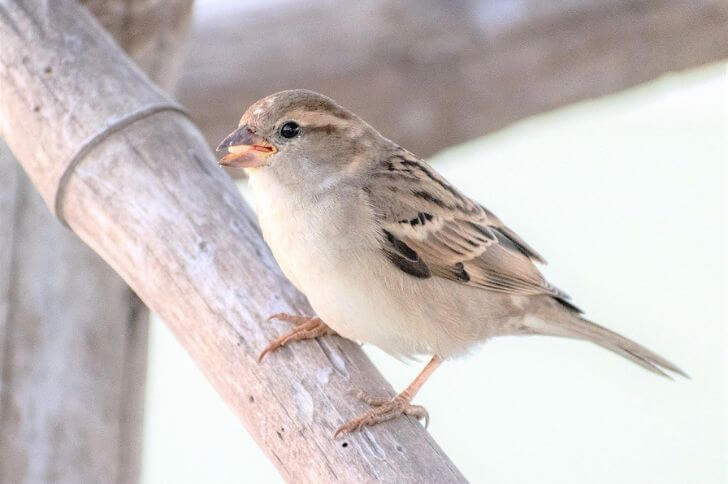
Identification:
A nuisance. Unwanted yet the most widespread avian species, house sparrows are a common bird that is a resident in every state.
The house sparrow is a small bird with a brown back and grayish-brown breast. The male has a gray crown and black throat. Adults range from 5.9-6.7 inches in length with a wingspan of up to 7.8 inches.
Habitat:
These birds are found in urban areas all over the world, and are known for their adaptability. You can also find them in farms, gardens and parks.
Breeding:
House sparrows breed primarily during spring or summer months, but this can vary depending on geography. In temperate climates, they start breeding earlier than in colder climates due to climatic differences. The female chooses a nesting site that provides protection from predators and inclement weather conditions. She will then build a cup-shaped nest using twigs and grasses while the male often helps with gathering materials nearby.
Once the nest is finished and eggs are laid and once hatched, chicks leave the nest after two weeks.
11. House Wren
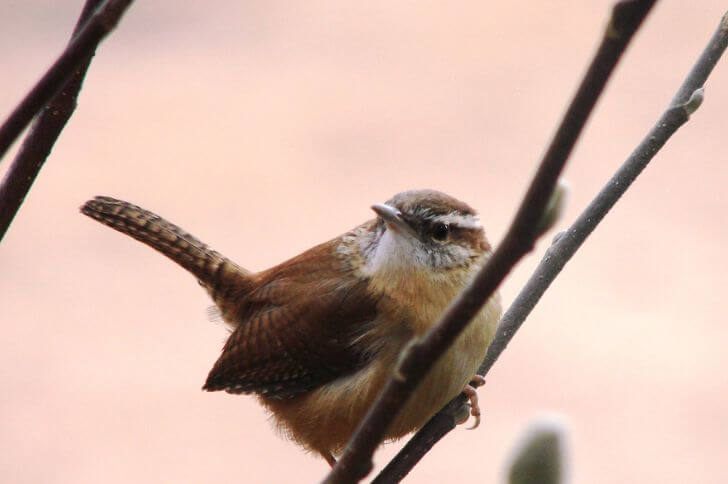
Identification:
House wrens come to the Midwest to breed. To identify them, check for small and compact all-brown birds. Note the pale throat and short tail.
Habitat:
They prefer forest edges and areas with scattered grass. Do house wrens visit backyards? Yes, wrens will always visit backyards with lots of brushes. Also, place a nesting box to welcome a breeding pair. Wrens are insectivorous and feed mainly on insects and spiders
Nesting:
House wrens begin building their nests in late April or early May, depending on where they live geographically. They prefer to place their nests in tree cavities or birdhouses, but will sometimes use other enclosed spaces such as eaves of buildings or under porches if needed.
Once the nest is built, female house wrens usually lay between 4-7 eggs at a time which hatch after around two weeks. The female then incubates the eggs while the male brings food for her and later on for the chicks once they’ve hatched. Despite their sometimes pesky behavior, house wrens are interesting and fun to watch.
12. Black-Crowned Night-Heron
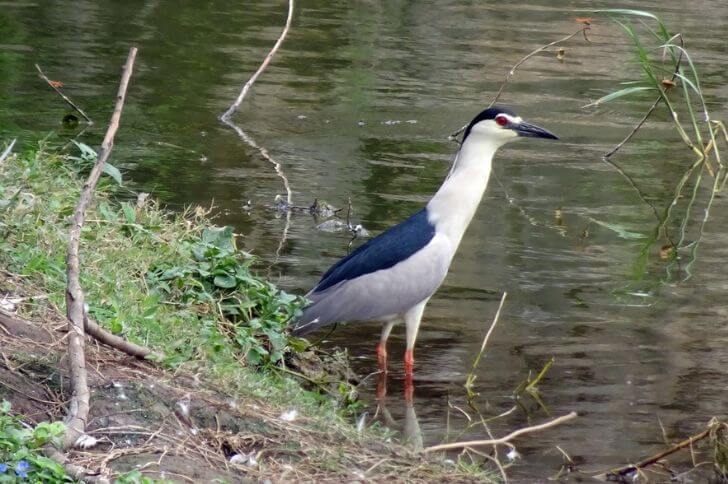
Identification:
Another type of water bird that breeds in the Midwest is the black-crowned night-heron. Adults are stunning with their red eyes, black caps, gray wings and pale underparts. Night herons juveniles are a streaked brown with beautiful yellow eyes.
Habitat:
Where do black-crowned night-herons live? They favor freshwater marshes, ponds, rivers, lakes, saltmarshes, wet fields, and mudflats. They are proficient hunters and will eat a variety of things including: insects, rodents, reptiles, and even fish.
Nesting:
These birds mate for life and will often build their nests close to each other in colonies. The female will lay 3-5 eggs per clutch and incubate them for about 24-26 days. The young herons will fledge anywhere from 29-34 days after hatching.
13. Black-Capped Chickadee
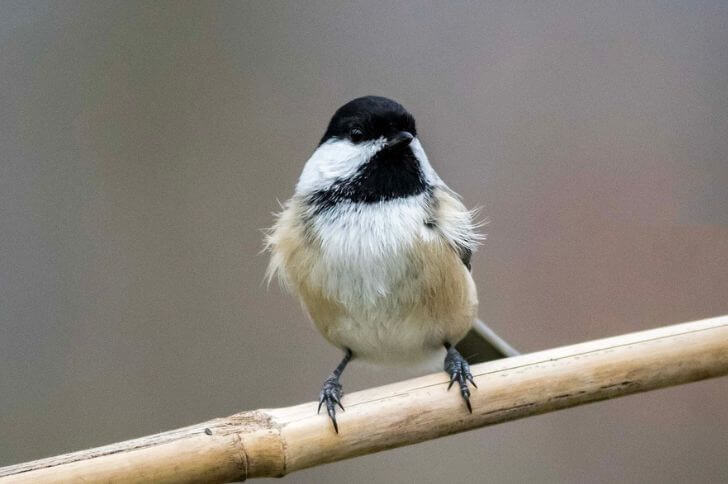
Identification:
Black-capped chickadees are non-migratory. This means you can find them all year round in their natural habitat. This songbird has a black head and white cheeks. The body is gray with a fluffy cute breast. The wings are short and the tail is long and pointed.
Habitat:
Chickadees are found in woodlands, gardens, and parks. They eat insects, spiders, berries, and seeds. They are gregarious birds that live in small flocks. They are known for their cheerful “chickadee-dee-dee” calls.
Nesting:
Breeding season for Midwest birds typically begins around mid-April. During this time, the birds will begin to look for mates and search for nesting spots in trees or shrubs with dense foliage.
The female chooses a nest site, constructs it using moss and twigs, then lines the interior with feathers. She then lays four to eleven eggs. Chickadees raise one brood per season.
FAQs
What birds stay in the Midwest in winter?
The most prominent winter resident is likely the American robin. With its bright orange breast and gray feathers, this hardy creature is found year-round in much of North America. Other common species include cardinals, chickadees, house wrens, crows and blue jays. These sociable creatures often gather in large flocks and frequent backyard feeders for easy meals when temperatures drop below freezing.
What is the snow bird in Wisconsin?
Dark-eyed juncos are also called snowbirds in the Midwest. In Wisconsin they arrive when the weather starts cooling down. They’ll remain in the state throughout winter, feeding on grass and seeds of winter weeds.
What birds stay in Illinois during winter?
Common backyard birds like cardinals, chickadees and jays are regular visitors during winter in Illinois. They can be found gathering food at bird feeders or snacking on berries. Other winter residents include ducks such as mallards and wood ducks, along with raptors like bald eagles and red-tailed hawks.
Sources:
https://www2.illinois.gov/dnr/education/CDIndex/BlackcappedChickadee.pdf
https://en.wikipedia.org/wiki/Western_kingbird
https://en.wikipedia.org/wiki/Dark-eyed_junco
Hi fellow bird watcher. Welcome to our small corner of the world. At the spanishbirdguides.com our mission is to share with other bird watchers the things we love about birds, where to go bird watching within the United States, and more. I’d also love to hear from you. Feel free to contact me about your bird watching escapades, share videos, photos and more.
